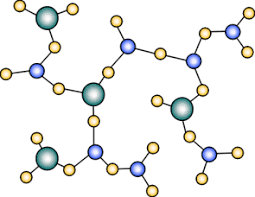
Atomic Structure
Relative Charges And Approximate Relative Masses Of A Proton, A Neutron, And An Electron:
| Particle | Charges | Relative Mass |
| Proton | +1 | 1 |
| Neutron | 0 | 1 |
| Electron | -1 | 1/1840 |
Structure Of An Atom:
Source: https://sciencestruck.com/labeled-atom-diagram
Electronic Arrangement:
The first shell is filled first and can hold up to 2 electrons. The rest of the shell can hold up to 8 electrons each and is filled in ascending order: 2nd, third, and onwards.
Accommodation of electrons in shells or energy levels is called electronic configuration or arrangement. The last or the outer shell is known as valence shell, and its electrons are known as valence electrons. These valence electrons indicate the chemical properties of an atom/element. Atoms having the same valence electrons have similar chemical properties.
The electronic configuration/arrangement of electrons in their shells are shown below:
The elements are arranged in a periodic table according to increasing proton number.
Rows are called periods, and there are seven periods in a periodic table.
The number of shells of an atom represents the period. The columns are known as groups, and there are eight groups in the periodic table. The number of outer electrons in the valence shell indicates the group. This means that all the elements/atom in the same group have similar chemical properties because they have the same number of valence electrons.
Proton Number And Nucleon Number:
Atomic number/ proton number can be represented by Z. Proton number is the number of protons in the nucleus of an atom, it is the identity of an element if the protons are charged the element will also be charged. Proton number is also equal to the number of the electrons in the atom. Different elements have different proton number.
* Electrons, Neutrons, Shell, Radius anything, can be the same of two different elements; however, their proton number can never be the same.
Mass Number / Nucleon Number
It is represented by A. the sum of protons and neutrons in a nucleus of an atom is known as nucleon number. (p+n)
* Electrons are not included because its mass is negligible, and it can be shared/transferred between atoms.
The number of neutrons can be calculated by subtracting proton number from nucleon number. Number of neutrons= nucleon number- proton number= A-Z
Interpret symbols such as
The symbol of an element X represents nucleon and proton number, as shown below.
Isotopes:
p=1, n=2, e=1
H2O can be written as D2O and T2O
Chemical properties of substances depend upon the number of electrons in the outermost shell; hence isotopes are chemically identical; however, they have different physical properties because they have different relative masses.
Elements that emit invisible radiations are called radioactive and phenomenon is called radioactivity—Examples Alpha, Beta, Gamma, X-ray, etc.
- Uses Of Radio Active Isotopes
- Power generation
- nuclear weapons
- phosphorous P-32 used in cancer treatment
- Carbon 14 used in carbon dating to find ancient ages.
Isotopes are radioactive and emit high energy radiation. They are known as radioisotopes.
How to calculate the numbers of protons, neutrons, and electrons in atoms and ions from proton and nucleon numbers:
An ion is charged particle. When an atom loses electrons, it is called a cation, and when it gains electrons, it is called an anion.
Example#1
X+3 is having 10 electrons and ten neutrons. Find the number of protons and mass numbers.
This is a cation that has lost 3 electrons; hence the atom of X consists of 10+3=13 electrons because the number of electrons is equal to the number of protons. Hence the number of protons is equal to 13.
Solution:
Nucleon number = p+n
p=13, n=10
p+n=13+10=23.
Example#2
Uranium 235. Deduce the number of protons, neutrons, electrons.
Solution:
Protons =92
Electrons =92
Neutron= A-Z
A=235, Z=92
A-Z= 143
